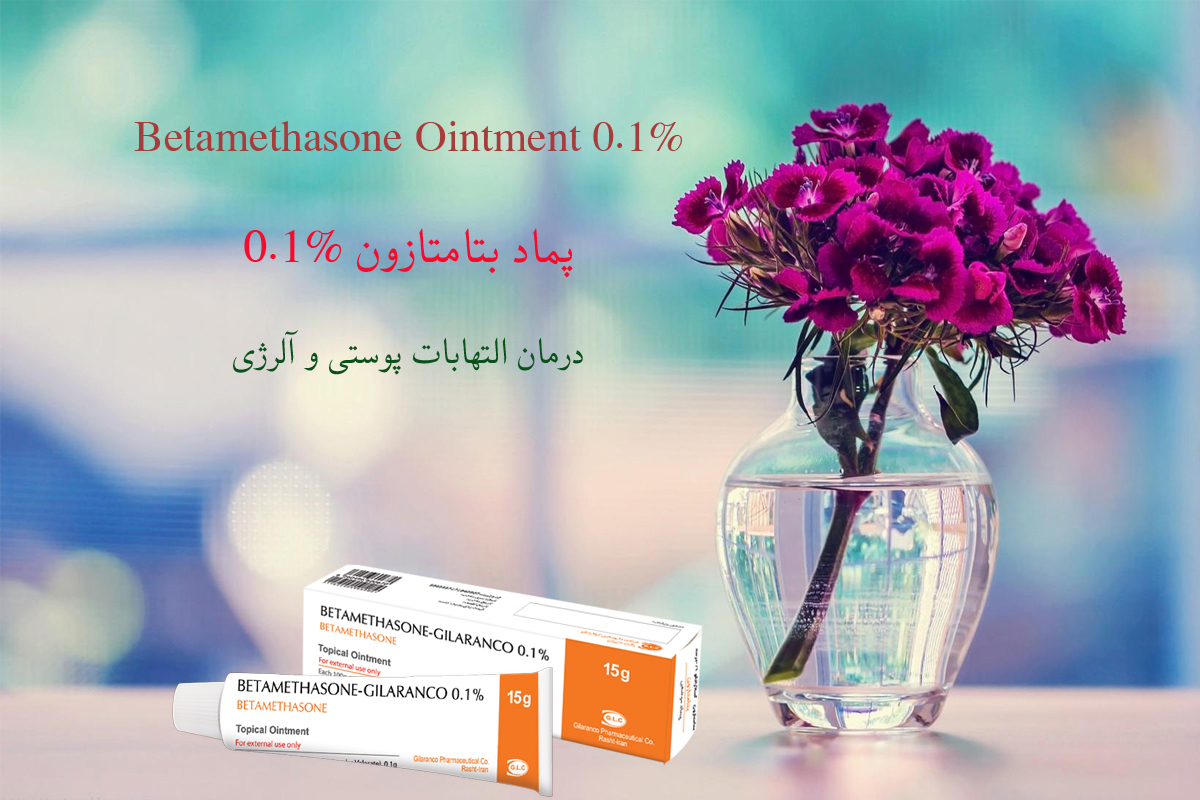Corticosteroid Anti-Inflammatory
Indications
Atopic Dermatitis, Contact Dermatitis, Mild Regional Dermatitis, Seborrheic Dermatitis, Inflammatory Dermatosis, Lichen Planus, Lupus Erythematosus, Anogenital Itching, Alopecia, etc.
Dosage
The amount of usage of this product in adults is 1-3 times a day topically and the consumption of the product in children is once a day topically.
In order to minimize the possibility of absorption of large amounts of topical Betamethasone, treatment with this drug should be stopped from time to time, and in order to avoid the side effects of its general absorption, it should always be used in small amounts and at the same time try to avoid it in one treatment period. Only a certain area of the body should be treated with this drug.
Mechanism of Effect
Topical Betamethasone passes through cell membranes and forms a complex with specific cytoplasmic receptors. This complex then enters the nucleus of the cell and binds to DNA. This way it can stimulate the replication of mRNA and finally accelerate the protein synthesis of many inhibitory enzymes that are responsible for influencing the anti-inflammatory properties of topical corticosteroids. .
These anti-inflammatory effects include prevention of edema (in the early stages), accumulation of fibrin, expansion of capillaries and movement of phagocytes to the affected area.
Pharmacokinetics
Topical corticosteroids are absorbed via normal skin. Inflammation, high temperature or other skin diseases may increase its skin absorption rate. Wearing tight clothes can also increase their absorption. However, the same amount that is absorbed through the skin goes through the path that systemic corticosteroids go through. Corticosteroids are bound to plasma proteins and are first metabolized in the liver and then excreted through the kidneys. At the same time, some of them and their metabolites are excreted through bile.
Warnings and Precautions
Systemic absorption of topical corticosteroids may lead to reversible inhibition of the Hypothalamic-Pituitary-Adrenal (HPA) axis.
This disorder may occur by taking large amounts of drug, using drug in a wide area of the body, taking drug for a long time and wearing tight clothes. If drug is used in the groin area of children, avoid wearing plastic shorts or tight-fitting diapers. Systemic absorption of this drug may cause complications such as Cushing's syndrome, hyperglycemia and glucosuria in some patients.
Use the drug with caution in the following cases:
1- Presence of infection in the rubbed area
2- Skin Atrophy
3- Diabetes
4- Cataract and Glaucoma
5- Around the mouth when there is herpes in the lesion
Prohibited Usage
Prescription is prohibited in patients with a history of allergy to Betamethasone Valerate.
Side Effects
Erythema, Folliculitis, severe itching and the appearance of vesicles (happens in less than 1% of patients). Skin burning, itching, skin irritation, dry skin, acne-like rashes, skin pigmentation, allergic contact dermatitis, secondary infection and skin atrophy.
Use in Pregnancy
FDA has classified Corticosteroids in group C. The use of topical Betamethasone a lot in large amounts and numerous parts of the body, is prohibited in pregnant women and women who are planning to become pregnant.
Use in Breastfeeding
Although it is not known that topical Corticosteroids are secreted in breast milk, the use of such drugs around chest during breastfeeding is not allowed.
Drug Storage Conditions
Protect from freezing and store at a temperature below 30°C.

 English
English  فارسی
فارسی  Arabic (العربية)
Arabic (العربية)  French
French 

